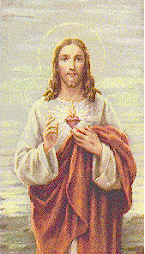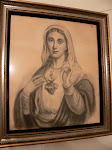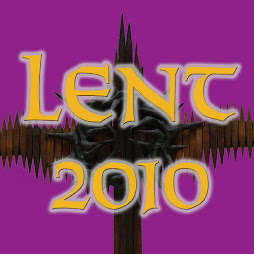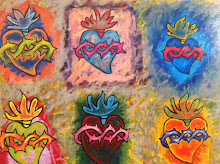Wednesday, July 4, 2012
Thoughts for the Holiday
The Fortnight4Freedom (or as is sometimes referred to as: “the Fortnight for Religious Liberty”) comes to a conclusion today. These previous 2 weeks were offered to us U.S. Catholics by our Bishops to concentrate through prayer and reflection on the importance of Religious Freedom in our country, that we might understand why these days are most significant to all that is a Catholic way of life for us. Hopefully we realize that we are called to be pro-active, not just reactive, about Catholicism in America. Today: Celebrate Catholic identity in public life.
American Catholics have too often fallen into a self-defeating pattern. Call it the ghetto syndrome.
The ghetto syndrome started years before the ghetto, in 1634 when Cecil Calvert’s Catholic settlers headed to Maryland on The Ark. They were afraid of upsetting their Protestant crew, so they heard Mass in hiding on their ship. It was a bad way to start. Why should Catholics feel that the Mass is something upsetting and almost shameful? By 1692 Catholicism was illegal in Maryland.
A much bigger wave of Catholic immigrants came at the turn of the 19th to the 20th century, with Europeans fleeing in droves to the United States. They were leaving poverty behind seeking prosperity. But many of them were also leaving deeply Catholic countries behind and entering a thoroughly Protestant one.
Catholics stayed poor at first – and stayed Catholic, too. But as we rose out of the ghetto, too many of us began behaving like those Catholics on The Ark, as if our faith was something very private that might cause offense.
Assimilation is a necessary thing for immigrants, but it is also dangerous. Our desire to be like our neighbors is powerful enough to create a united nation, E Pluribus Unum – but also powerful enough to erode religious identity.
The Old Testament is filled with cautionary tales about assimilation with pagan societies. Catholics today can relate to that.
The children of the first immigrant Catholics had a very rough time of it. They knew they had to drop their accents and change their clothes to fit in. But strong anti-Catholic currents wanted more than that.
The Know Nothings, the American Protective Association, and the Ku Klux Klan spread their mistrust of Catholics far and wide in the 19th century. As recently as the mid-20th century their sentiments were echoed by writers such as Paul Blanshard and the organization, Protestants and Other Americans United for Separation of Church and State (now shortened to “Americans United”).
The theory of inferiority they touted:
• Catholics were intellectually and religiously inferior, because their minds and faith was beholden to the teachings of an Italian pope;
• Catholics were racially inferior, because they came largely from the swarthier Southern European people, not the northern Europeans;
• Catholics were socially inferior, because the Irish and other new immigrants were the unskilled labor of their day.
Some Catholics were cowed into submission by the onslaught; some fought back boldly.
At any rate, the faith was something too powerful to be easily dropped. That took longer. Maybe the turning point came when the new generation was finally grown up and moving into positions of leadership. Many thought it necessary to distance themselves from the “ghetto” they came from.
Take higher education, for instance. In 1970, the nation’s top Catholic university leaders signed the “Land o’ Lakes Statement” that redefined the Catholic mission in education.
No longer were our universities to be places where Catholic intellectuals would mine the rich veins of magisterial teaching and apply Catholic principles to the problems of our day. Now Catholic universities were to be places that evaluated and sifted the teachings of the Church – and often found them wanting. What they would offer their students wasn’t the enduring wisdom of the Church, but whatever was currently popular in academia.
The same ghetto syndrome played out in parochial schools, parish religious-education programs and even liturgical planning. Everything became less jarringly Catholic, and more acceptably “Protestant.”
Hopefully, things are beginning to change.
In our generation, Catholics either believe the Church, and stay in it, or disbelieve the Church, and leave it. Those who stay see its rich teaching as a beautiful answer to the world’s problems. Their experience of the world’s wisdom is more like the woman in last Sunday’s Gospel. “She had suffered greatly at the hands of many doctors and had spent all that she had. Yet she was not helped, but only grew worse.”
Stand up for your Catholic faith. How can we stand by and watch as it erodes at the hands of those who no longer believe. The time for relaxing in our faith is over. As we celebrate the birth of our country today, let us also celebrate a renewed commitment to our Catholic faith.
.
Subscribe to:
Post Comments (Atom)




























No comments:
Post a Comment